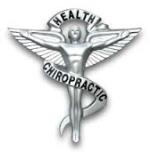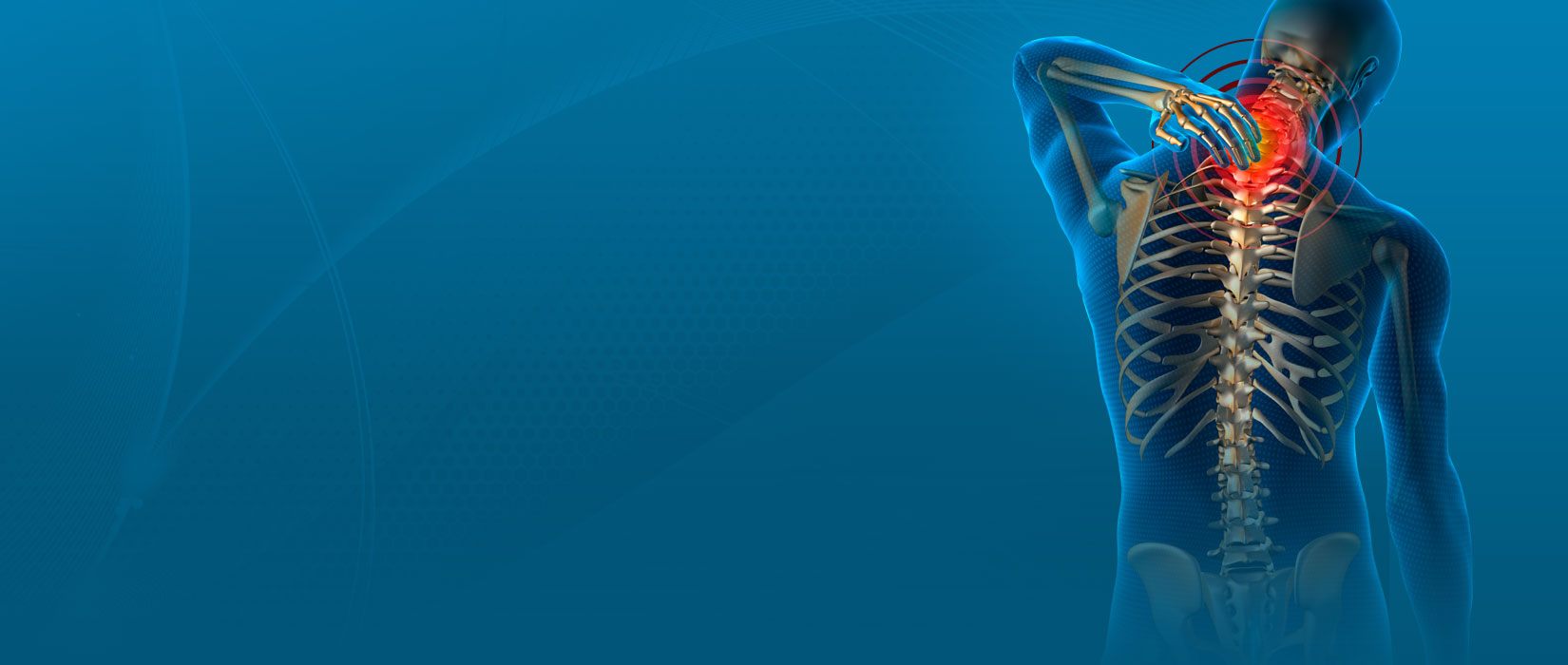درباره سايت

دكتر حميد زارع زاده متخصص كايروپراكتيك
دارای بوردهای سراسری و ایالتی آمریکا و کانادا
عضو رسمی انجمن کایروپراکتیک آمریکا
عضو رسمی انجمن کایروپراکتیک ایران
پيشگيري و درمان بيماري هاي ستون فقرات ، ديسك كمر و گردن ، سياتيك ، آرتروز ، سردرد ، ميگرن ، بي حسي دست و پا
آدرس مطب : تهران - قائم مقام فراهانی - بالاتر از شهید مطهری - جنب بیمارستان تهران کلینیک - ساختمان پزشکان 200 طبقه 3
تلفن : 88195376
تلفن همراه : 09352105315
پيوندها، روزانه ها و ...
عکس ها
- همه
- گروه 1
- گروه 2
- گروه 3
مطالب سايت
The Chiropractic Objective
The professional practice objective of chiropractic is to correct vertebral subluxations and Intersegmental Dysfunction, in a safe and effective manner. The correction of subluxation is not considered to be a specific cause for any particular symptoms or disease. It is applicable to any patient who exhibits subluxation regardless of the presence or absence of symptoms or disease.
The chiropractor determines the presence of subluxation and helps the body correct itself by introducing an adjustment in a prescribed manner. Contrary to popular misinformation, the Doctor of Chiropractic (D.C) does not just move the misaligned Vertebral back into place, but he or she facilitates the body’s correction of Biomechanical Intersegmental Dysfunction.
During the adjustment, the subluxated vertebral are unlocked and released from their Dysfunctional state. The body’s inborn intelligence is called upon to shape the spine. When this happens, the vertebrae return to their proper alignment.
The purpose of chiropractic care is the correction of Biomechanical Intersegmental Dysfunction or Subluxation. Subluxation promotes sickness and disease which robs our vitality and weakens our immune system.
The spinal column consists of twenty-four small bones called vertebrae. Seven of these are located in the neck. Twelve are found in the mid-back and five are in the lower back. The vertebrae stack one on top of the other, and when you look at them from front to back, they form a straight line. It’s very rare to find someone with a spine that is perfectly aligned. In most people, the spine curves slightly to the right or the left and sometimes, one or more of the vertebrae are twisted or rotated.
Disease or Dis-ease?
The word disease is combination of ‘dis’ and ‘ease’. Dis is prefix meaning “apart from” and “ease” meaning a “state of balace”. It follows then that dis-ease is a lack of comfort, a loss of harmony is the system. When there is lack of harmony in music, the musician adjust the notes to complement one another and “work well together”. That is exactly what an adjustment to correct or reduce – Subluxation can do - restore body harmony.
Unlike music, where discord is immediately apparent, damage from subluxation is not so obvious at first.
The unfortunate aspect of this “dis-ease” is that it need not be painful to silently destroy the body’s health and well-being. Gradually, the body’s life support systems begins to fail and the ability to live a full life diminishes.
The cause of subluxation are numerous and often, unavoidable. They can be caused at birth, if the delivery is difficult or requires the use of forceps. Many births result in Biomechanical Intersegment Dysfunction in children also during the critical growing years and fall while learning to walk. In later years, they engage in activities or sports which can cause Subluxations.
As adults, many things can weaken the spine, and cause Subluxation. This list includes: sports accidents, automobile collisions, falls in the house, bad posture, emotional stress, dental problems pushing ourselves past our limits, alcohol and drug problems or even carrying heavy brief cases or hand bags on a daily basis. To ignore these problems and not have your spine checked regularly by a chiropractic is to invite disease to overwhelm your body and impair the quality of your life.
The Philosophy of Chiropractic
While the word philosophy may bring to mind ancient Greeks or bearded scholars in dusty libraries, the philosophy of health is a vibrant study that influences how we live.
It helps us make critical choices about how we treat our bodies.
Too often, people respond to every symptom by gulping down pills to alleviate the discomfort. When they catch a cold, they buy an over-the-counter remedy from the drugstore.
If they gain a few pounds, they head for the diet pills. When they feel tired, they take pills to stay awake and when they want to sleep, there is a pill to take for that, too. If you have symptoms, the drug companies have a remedy. The message to the consumer is, whatever is wrong, just pop a pill and you will be fine. When something goes wrong in the body, we get rash, feel pain or experience discomfort in any one of a hundred ways. They body’s warning system is at work. Like the red light on your car’s dashboard, symptoms tell you it’s time to check something in your internal machinery. For the followers of the medical philosophy of disease, these warnings are treated by attempting to fine the symptoms and not the cause. These people believe something from the outside will change something on the inside. That state of mind dangerous to one’s health. If you get a pain in your head, are you going to check out the cause and correct it? Or are you going to take a pain killer and assume the problem is gone because the symptom has been alleviated?
It is the belief that health comes from within. A properly functioning body can do everything naturally that pills attempt to do chemically. Furthermore, the body knows when to heal, how to heal and when to stop healing and go back on maintenance. Chiropractic philosophy begins with the premise that there is an order to the universe. Nothing is random or meaningless in our world. There is a reason for everything. Granted, we may not always recognize the reason, let alone understand it, but we can be certain that nothing occurs by chance or “ just happens”. We know that there is an intelligent order to the universe. A guiding force exists in all living matter, and most definitely in human beings. It is only because of this intelligence that we can continue to exist and operate in this world. Without it, our planet would be a shapeless pile of rocks and debris.
Now, this premise isn’t a matter of blind faith or religious faith on the part of scientists, philosophers and chiropractors. It is based on physical evidence seen in the real world.
Look around you! Can everything in the universe be the result of random selection or luck? Why is a bird’s wing perfectly designed for flight, right down to the tiniest pinfeather? Does it just happen that a plant’s roots travel downward into the ground and its leaves grown upward? If universe were really random, at least some plants would send their roots straight up and bury their leaves in the soil. The sun would only come up on random days and it would be difficult to be certain of anything occurring again.
To think the universe is operating without any intelligent plan is like thinking that great sphinx of Egypt was the result of an accidental rock slide!
Innate intelligence is within universal intelligence which guides all life. Innate intelligence is in every living thing. It is revealed when a plant turns its leaves toward the light or when a bird sits on it’s eggs until they hatch and when a human body knows what to do to heal itself.
It requires human intelligence to create a great sphinx. Even greater intelligence is needed to create and sustain the natural wonders which surround us. It takes what we call universal intelligence. As humans, it is difficult for us to understand what it is, where it comes from or how it works. We know only that it must exist or nothing else would.
Innate intelligence guides us to adopt to our environment in order to survive. It makes a leafy plant on a window turn its leaves toward the light. Move the plant and it will turn its leaves again. You don’t have to tell the plant what to do. The plant knows it has to have light to survive. The plant knows what it has to do because it has innate intelligence.
Innate intelligence makes a baby’s heart beat, digests food, eliminates waste, uses white blood cells to fight infections. No one has to teach an infant any of these things.
Your innate intelligence is an expert building a healthy body. But , if you don’t have proper tools such as energy or matter your body will not reflect health .
Verlebral Subluxation, or Biomechanical Intersegmental Dysfunction:
In our world, our body doesn’t always function at peak performance. The brain sends messages to the cells in the body, telling them what they need to do in specific parts of the body. Messages travel along a complex system of nerves. They can run into interference, some of the messengers may take detours, others slow down or lose their way. Much of this interference occurs along the spine .This is the headquarters of the nervous system. All nerves from the brain travel down this row of interlocking bones, called vertebrae. They branch off and pass through openings along the spine to get to their destinations.
Occasionally, one or more of the vertebrae move out of alignment, we call this subluxation or Biomechanical Intersegmental Dysfunction. When misalignments occurs the spinal openings narrows distorting the flow of normal nerve supply throughout the body. If you have nerve interference, your body can’t perform efficiently because it isn’t getting the right message from the brain.
Here is an example of what happens. When unfriendly virus attacks, Innate Intelligence instructs the body to react and fight off the virus. This often means raising the body temperature so the fever can fight off the invador.
If the nerve flow is disturbed because of nerve interference chemical imbalance occurs and body will function less efficiently-its ability to fight off an infection is diminished.
Chiropractic Consultation
Normally, your first visit consists of a consultation and complete spinal examination, in addition to basic physical and Ortho/Neuro examination. Most doctors will also provide some education if you are not familiar with chiropractic care.
The doctor carefully examines the entire spinal region to detect biomechanical intersegmental dysfunction or subluxation. Other method or instrument may be used to verify the findings. All of the examination techniques used by chiropractors are safe, painless and non-invasive.
Indications of Biomechanical Intersegmental Dysfunction or misalignment of spine show up on an x-ray, whereas, soft tissue damage to nerves, muscles or discs can not be seen. Then, for further diagnosis, chiropractors utilize imaging tools such an MRI’s, Thermography paraspinal EMG’s and CT scans.
Use of x-rays should be a concern. But keep in mind that chiropractic does not use radiation as treatment or therapy but only as a diagnostic tool.
Report of Findings
After testing and diagnosis, you’ll receive a report of the doctor’s findings. You’ll be told if there is any Biomechanical Intersegmental Dysfunction or subluxations and how severe it is.
You and your doctor will discuss the health of your spine and the doctor will outline a course of care needed to correct the subluxation. This may include spinal adjustments, beneficial exercise and changes to your life-style.
Chiropractors don’t treat symptoms, our job is to locate the cause of dis-ease, the subluxation, and correct it. Frequent adjustment may be required at the beginning. As your condition improves, the number of adjustments will decrease and you will be placed on wellness care.
Don’t expect subluxation to be corrected in a few visits. It will take continued adjusting to be certain the vertebrae have returned to their proper position and your muscles and ligaments can continue to hold them firmly in place.
There are three levels of chiropractic care. First, is an intensive care phase, Level I. During this time, the chiroprator's objective is to reduce stress damage to the spine and nervous system. Level II is the reconstructive phase. Now, the spine is nearly or completely aligned but it has to be monitored while it becomes stronger and holds the adjustments for longer period of time.
Level III is the wellness phase. Now your spine is holding its adjustment. This phase is similar to schedule check ups for your eyes and teeth by eye specialist or dentist.
The Adjustment:
At the heart of chiropractic care is the adjustment. A spinal adjustment is a specific maneuver performed on the spine or extremities to facilitate the body’s correction of subluxation and Biomechanical Intersegmental Dysfunction. There are many ways to adjust the spine. Usually the doctor’s hands or a specially designed instrument is used to deliver a highly accurate adjustment. After years of training, each doctor has selected a variety of methods and has become skilled in their delivery.
Regardless of the technique used, each chiropractic adjustment is tailored to the patient’s age, size, and unique spinal problem. What you can expect from your adjustment is a feeling of peace and relaxation that can last from a day to a week.
Patient’s often comment that they experience a better night’s sleep and increased energy. Some patients report that their symptoms start to go away after the first adjustment, while others don’t feel any immediate difference. If you don’t feel a change, don’t be discouraged. Often you are not aware of internal improvements.
Muscles may become sore after being adjusted. You may feel sore like you had a work out at the GYM. This condition is always temporary and disappear gradually.
Time to Heal
One of the first questions many chiropractic patients ask is: how long is this going to take? This is a question they may not think to ask a medical doctor. The chiropractor cannot be expected to undo years of dis-ease in a single visit. It just doesn’t work that way. Your doctor will try to tell you how long it might take before you achieve maximum correction. Whatever the answer it will be based on three considerations.
First, the doctor will look at the objective results of any diagnostic instrumentation or tests of your physical examination. Second, the doctor will assess the experience with other patients who had similar subluxation patterns. Third, he or she will consider these characteristics that are unique to you, including your age, chronicity, your general health, genetic factors, emotional stress, and diet.
Chiropractic Education
Chiropractic education is every bit an comprehensive as is in medical education. Before being accepted by chiropractic universities, students must have completed a minimum of 4 years of undergraduate work leading to a Bachelor’s Degree in a selected sciences.
Once in chiropractic universities, the five-year course of study is longer than that required of most medical students. In addition to classroom and lab work, each student chiropractor must complete a period of internship during which students care for patients under the close supervisor of instructors. This is often followed by an ex-ternship program during which students assist field chiropractors in their office or/and hospital rotations. There are eighteen chiropractic universities in the united states and eight in six foreign countries.
The council of chiropractic education (CCE) is a regulatory body responsible for accrediting chiropractic universities and it is well recognized on internation level. Only graduates from C.C.E accredited universities have the right to sit on internationally recognized boards.
Before, obtaining their degrees, all students must complete approximately one-thousand hours of work in the clinic setting. Chiropractors are often given additional training in anatomy, nutrition, palpation with special emphasis on imaging techniques including radiology and M.R.I studies. In fact, chiropractic students log more educational hours in these subjects than their medical counterparts.
After new chiropractors have graduated, they must then pass national boards which includes three written and one practical exam. The National Board of Chiropractic Examination tests.
The doctor’s knowledge in many areas. Part I section evaluates the student in Basic Sciences, Part II, III include clicical diagnosis and part IV is practical knowledge of students. Furthermore, the practical exam and interview conducted by boeard evaluates the doctor ability to perform its duties in clinical setting.
Why Should I Visit a Chiropractic office?
Disc problems:
Since spinal discs have a very poor blood supply, they also depend upon the circulation of joint fluids to bring in nutrients and expel waste. If a spinal joints loses its normal motion and this pumping action is impaired, the health of the disc deteriorates. Like a wet sponge, a healthy disc is flexible. A dry sponge is hard, stiff, and can crack easily. This is how many disc problems begin.
Because of the way each disc is attached to the vertebrae above and below it, a disc can not “slip” as commonly thought. However, drauma or injury to the spine can cause discs to bulge, herniate, or worse, rupture. This can be quite painful, putting pressure on spinal cord and nerve roots.
The chiropractic approach to disc problems is to help restore better motion and position to the spinal joints. Besides reducing disc bulging, better spinal function helps decrease inflammation so the slow process of healing the surrounding soft tissue can begin. The disc is a small cartilage pad that is contained by layers of fibrous tissues. Each disc serves as a connector, spacer, and shock absorber for the spine. When healthy, discs allow normal turning and bending.
Discs can bulge, herniate or rupture resulting in other problems.
Biomechanical Intersegmental Dysfunction:
1. The segments above and below:
If a segment does not function properly, the stress is taken up by adjacent segments leading to excessive and abnormal biomechanical stress.
2. Intersemental Dysfunction can in part lead to displacement of normal spinal center of gravity, which can lead to abnormal stress upon the vertebrae and disc, which in the long run can lead to degenerative disc disease.
3. Dysfunction of two segments, as it interfers with normal physiological range of motion, can directly interfere with normal disc supply of nutritions, leading to early disc degeneration.
4. Chromic Intersegmental Dysfunction can lead to discopathy, and resultant nerve entrapement.
Lower Back Pain
Many of the pain-sensing nerves of the spine are in the facet joints, the two interlocking “fingers” at the back of each spinal bone. The normally smooth surfaces on which these joints glids, can become rough, irritated and inflamed. Many factors an be responsible for low back pain. Improper siting or lifting, ovrexertion, trauma, or inherited spinal abnormalities may contribute to the cause.
The chiropractic approach is to help restore a more normal motion and position of affected spinal bones with specific chiropractic adjustments. The simplicity and success of this approach has been documented in numerous research projects and has helped many patients avoid risky approaches.
The sciatic nerves are the largest (and the longest) nerves of the body, reaching about the size of your thumb in diameter, and running down the back of each leg. When these nerves are irritated or affected by the inflammation of nearby soft tissue, doctors refer to this as sciatica.
One of the most common causes of sciatic leg pain is the Biomechanical intersegmental Dysfunction. It can accompanied by the bulging or herniation of the soft pulpy discs which separate each spinal bone. This can irritate or put pressure on the sciatic nerve roots as the leave the spinal cord. The result can be an infense pain shooting down either or both legs.
Conventional approach involves pain medication, muscle relaxor, physical therapy, and even surgery. The chiropractic approach is to use carefully directed and controlled adjustment to remove pressure from spinal structures. Sciatica, like other health problems that can be traced to the spine, often respond dramatically to the restoration of normal spinal function through conservative chiropractic care.
Neck Pain:
Is the proper spinal curve present? Are the nerve openings between each opening of spinal bones free and clear? Is the head balanced? Are the shoulders level? These and other considerations are used to create a plan of specific chiropractic adjustments to help improve the motion and position of spinal vertebrae.
The chiropractic approach to neck pain is to locate its underlying cause. This begins with a complete case history and thorough examination. Special attention is given to the structure and function of the spine, and its affect on the nervous system.
Headaches:
A frequent and overlooked cause of headaches is the malfunction of spinal bones in the neck and upper back. When bones of the spine lose their normal position or motion, sensitive nerves and blood supply (vessels) to the head can be affected. When spinal nerves and related tissues are stretched or irritated, they can produce throbbing headaches.
If a thorough examination reveals reduced range of motion, loss of normal spinal curves, or mechanical restrictions, chiropractic care should be considered. After a complete explanation, you’ll receive a care program designed for your unique spinal problem.
Whiplash
Collisions that occur during sporting events, slips, falls or automobile crashes can all have a damaging effect on your neck and back. These types of collision-related injuries are often called a “ Whiplash Injuries”.
The resulting instability of the spine and soft tissues can contribute to headaches, dizziness, blurred vision, pain in shoulders, arms and hands, reduced ability to trun and bend, and low back problems. As the body attempts to adapt, symptoms may not appear until weeks or even months later.
The chiropractic approach to these types of injuries is to use specific chiropractic adjustments to help normalize spinal function. After a thorough case histoy and examination, the doctor will recommend a series of visits to help restore proper motion and position of spinal bones. If caught early enough, inflammation can be reduced and scar stissue can often be minimized.
Whiplash is mostly commonly received from riding in a car that is struck from behind or that collides with another objectsمنبع : وب سايت انجمن ملي كايروپراكتيك




















